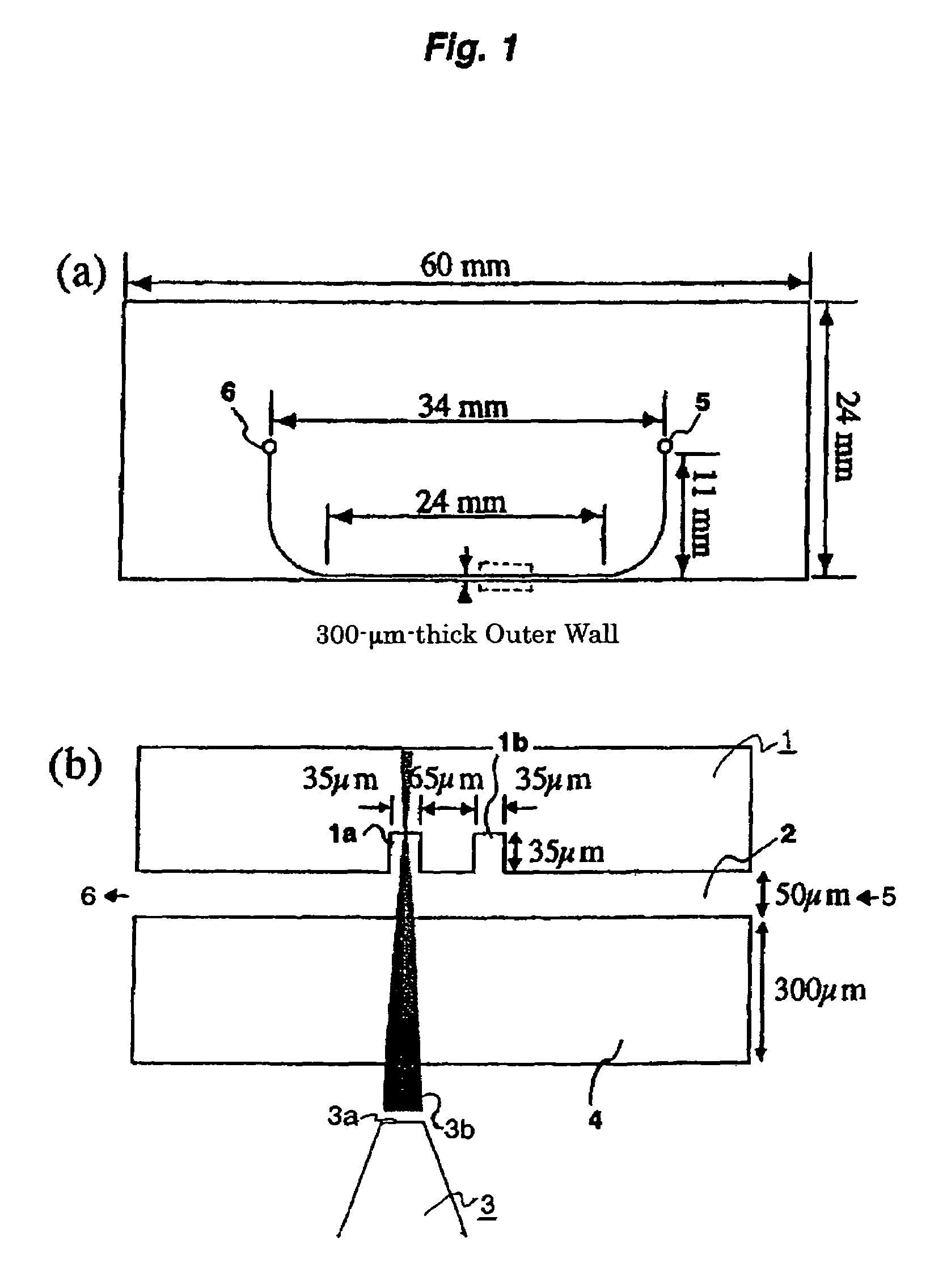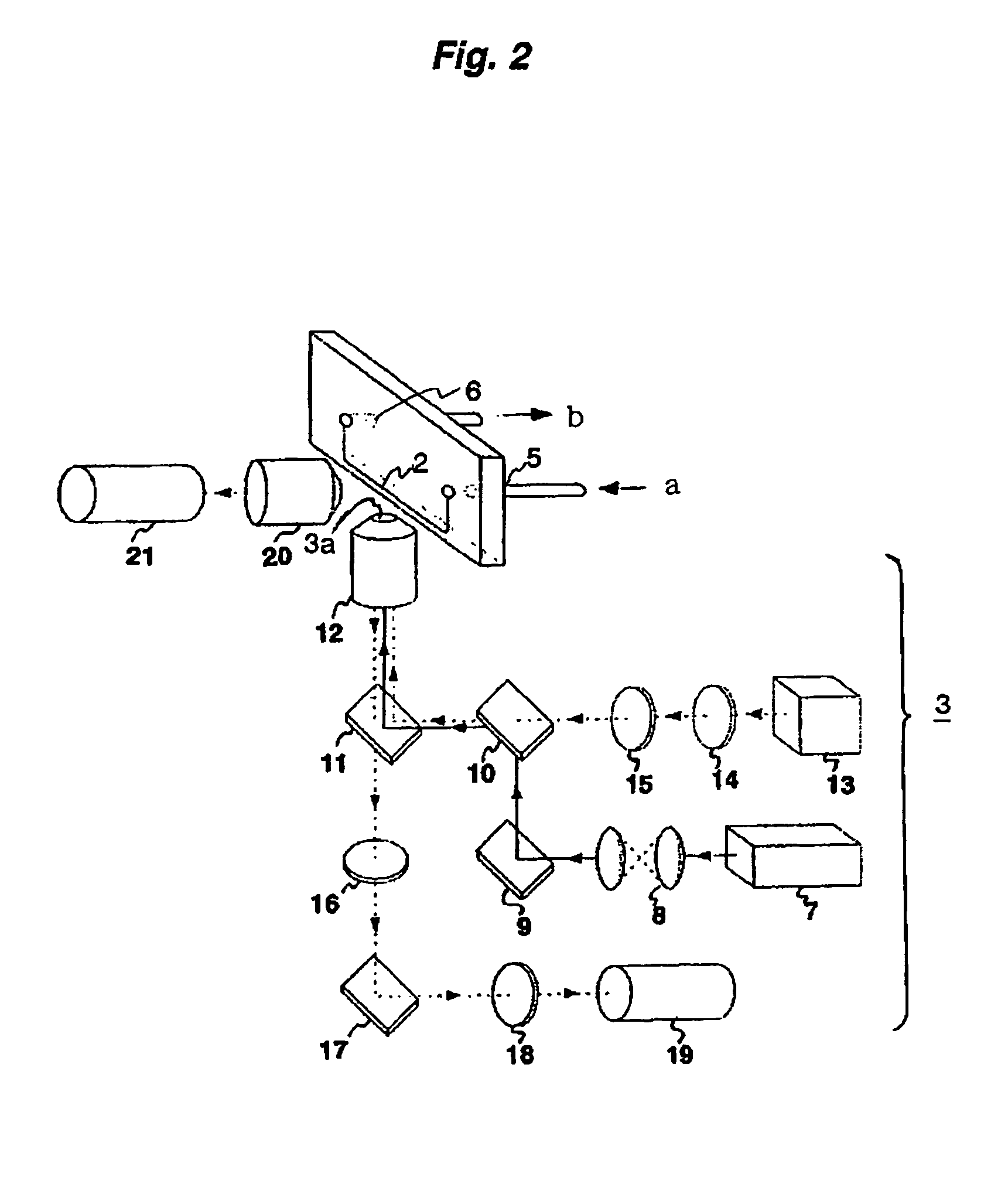Method for sorting and recovering fine particle and apparatus for recovery
a technology of fine particles and apparatus, which is applied in the field of fine particle sorting and recovery, can solve the problems of inability to sort various kinds of fine particles at a time, complicated operation and maintenance procedures, and possible contamination of atmospheric air by hazardous substances, so as to simplify the apparatus and its peripherals, the effect of easy control of the optical pressure used in the present invention
- Summary
- Abstract
- Description
- Claims
- Application Information
AI Technical Summary
Benefits of technology
Problems solved by technology
Method used
Image
Examples
example 1
(1) Experimental Method
[0093]In this experiment, a fine-particle recovering apparatus (in the form of a microchip) of the present invention as shown in FIGS. 1 and 2 was used.
[0094]A fine-particle collector (1) provided on a chip comprises two microgrooves (35 μm×35 μm×25 μm, chambers (1a) and (1b)) for recovering fine particles. A microchannel (50 μm in width×25 μm in depth, flow path (2)) for allowing a sample containing fine particles to pass along is separated from the outside by an outer wall (4) (prepared by PDMS). Considering the working distance of the objective lens 1 (12 in FIG. 2), the thickness of the outer wall (4) was set at 300 μm so that an Nd:VAN laser beam (wavelength: 1064 nm) would converge on the bottom of the chamber (1a)(microgroove).
[0095]In this experiment, an inverted fluorescence microscope (Axiovert 135TV, manufactured by Carl Zeiss) was used in combination with a laser operation system. A laser beam emitted from an Nd:VAN laser (7) was condensed using th...
PUM
| Property | Measurement | Unit |
|---|---|---|
| thick | aaaaa | aaaaa |
| diameter | aaaaa | aaaaa |
| particle diameter | aaaaa | aaaaa |
Abstract
Description
Claims
Application Information
 Login to View More
Login to View More - R&D
- Intellectual Property
- Life Sciences
- Materials
- Tech Scout
- Unparalleled Data Quality
- Higher Quality Content
- 60% Fewer Hallucinations
Browse by: Latest US Patents, China's latest patents, Technical Efficacy Thesaurus, Application Domain, Technology Topic, Popular Technical Reports.
© 2025 PatSnap. All rights reserved.Legal|Privacy policy|Modern Slavery Act Transparency Statement|Sitemap|About US| Contact US: help@patsnap.com



